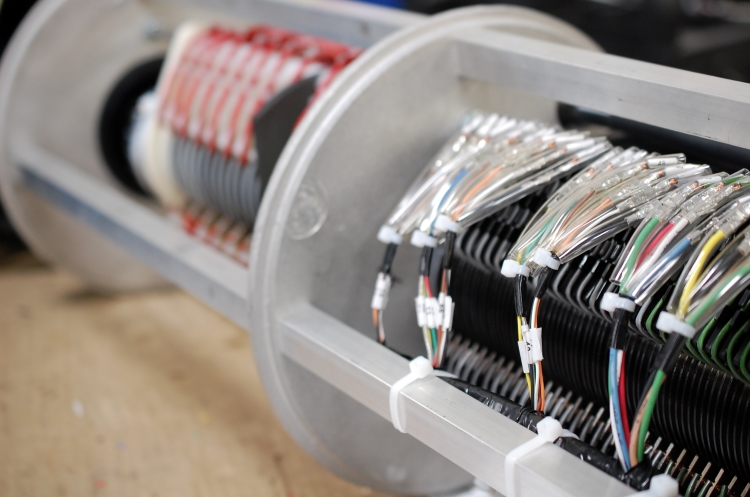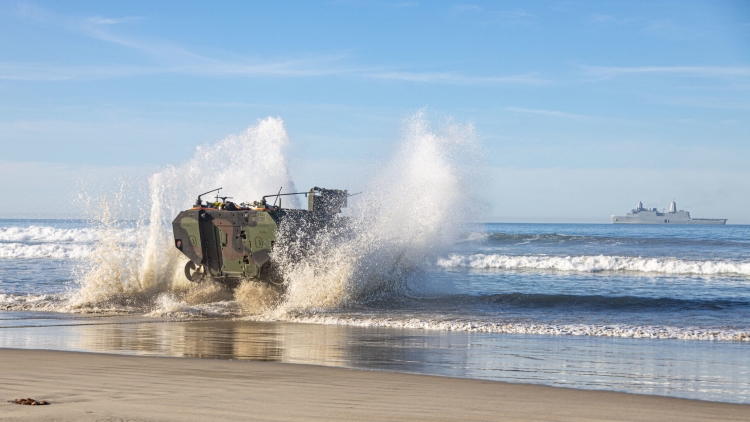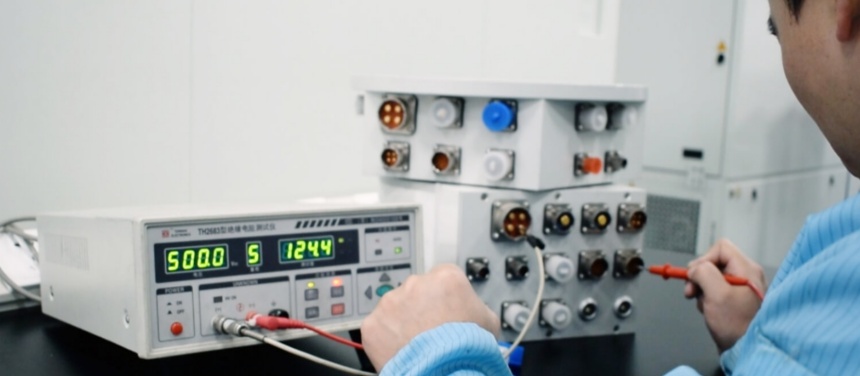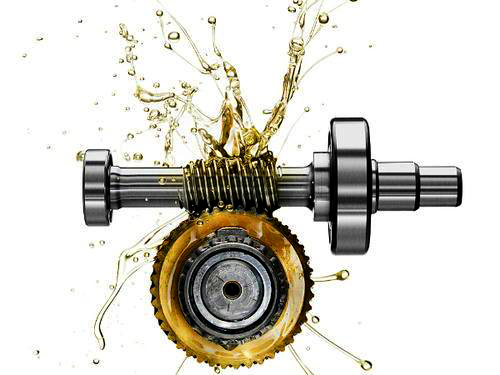We start our deep dive into the complex, intricate yet fascinating mechanics of slip rings by introducing one integral aspect – slip ring lubrication. There may be numerous parts, but it is the lubrication that ensures all components ceaselessly work together for optimal performance and longevity. This seemingly simple process has a significant role in reducing wear and tear, minimizing friction, enhancing effectiveness, and ultimately prolonging the life of a slip ring system.
The realm of lubrication often brings forth several concerns from users – its necessity, the right type and quantity, and the direct influence on slip ring efficiency. As we address these concerns, we aim to underscore how lubrication lays the groundwork for a well-functioning system. Beyond mechanical efficacy, the right lubrication can also significantly contribute to user satisfaction, reducing maintenance efforts, and unexpected operational hiccups.
The purpose of this article lies in the crux of these discussions. As we navigate the extensive landscape of lubrication, we intend to offer an insightful and comprehensive resource that educates users on the myriad nuances of lubrication. The article strives to explain why lubrication is not just an optional maintenance task but a mandatory practice for the health of your slip ring systems. Backed by details, professional advice, and hands-on tips, we aim to equip our readers with valuable knowledge to protect their investments, make informed decisions, and optimally manage their slip-ring systems.
Importance of Slip Ring Lubrication
Slip ring lubrication is essential for reducing friction between the moving parts of the assembly, especially the bearings. Constant friction can lead to increased wear and tear, which could potentially hamper smooth contact or result in system failure. Proper lubrication creates a thin film that separates the contact surfaces, thereby minimizing metal-to-metal contact. Consequently, lubrication works towards preserving the slip ring bearings, ensuring smooth function, and mitigating excessive wear and tear, extending the system’s life.
The benefits of lubrication extend beyond protecting bearings. Adequate lubrication significantly contributes to the overall efficiency, reliability, and lifespan of slip rings. It ensures smooth electrical transmissions, reduces the risks of overheating, minimizes energy consumption, and safeguards the integrity of data transfer. Lubrication also plays a vital role in noise reduction and preventing the accumulation of contaminants. Through these multifaceted benefits, proper lubrication establishes itself as a backbone for the slip ring system’s optimal functioning and consistent performance.
Despite the evident merits of lubrication, users may have concerns regarding the practicalities of implementing a regular lubrication process. Common among these concerns are selecting the best lubricant from a vast array of available products, understanding the proper application technique, and determining the maintenance schedule for lubrication. Tackling these pervasive concerns requires a meticulous understanding of slip ring assemblies, the environment they operate in, and the influence of various factors on the choice of lubricant, application frequency, and maintenance. Knowledge sharing and addressing these concerns is crucial in helping users maintain their slip ring systems with utmost competence.

Slip Ring Lubrication Types and Selection
The world of lubricants comprises various types, designed to suit a range of applications, particularly for slip ring bearings. The three most common types are grease, oil, and solid lubricants, each possessing a unique set of properties tailored to specific requirements and operational conditions. Grease is a versatile option due to its easy application and long-lasting performance. It is preferred in applications where leakage or seepage of lubricant can be problematic. Oil, on the other hand, serves as an ideal choice for high-temperature or high-speed operations, requiring excellent heat dissipation and low resistance. Solid lubricants like graphite or molybdenum disulfide excel in extreme environments, providing dry, essentially maintenance-free lubrication under conditions where conventional liquid or semi-liquid lubricants might fail.
The selection of the correct lubricant is influenced by various factors, including temperature, humidity, load, and specific industry applications. Temperature and humidity can determine the viscosity, durability, and applicability of a lubricant. High temperatures may cause thermal degradation or oxidation, changing properties like viscosity and rendering the lubricant ineffective. Similarly, humidity can either dilute or wash away the lubricant, compromising its performance. Load or contact pressure can determine the appropriate lubricant type and base oil viscosity. Finally, industry applications are influential in lubricant selection, as requirements in marine, aerospace, automotive, or industrial sectors could vary greatly due to operating conditions, regulations, or technical specifications.
To choose the right lubricant for your slip ring system, it is crucial to consider all these factors and consult the manufacturer’s guidelines or seek expert assistance. Identifying operational conditions and taking note of the environmental factors unique to your application will result in informed decisions that safeguard your slip ring system’s performance and lifespan. Be it grease, oil, or a solid lubricant, a well-considered choice will foster smooth operations, reduced maintenance efforts, and a prolonged life for your slip ring investment.

Slip Ring Lubrication Application and Maintenance
Proper application of lubrication within the slip ring system significantly impacts its performance and durability. The process involves ensuring the lubrication is evenly spread across all surfaces likely to face friction, primarily the bearings. However, more does not always mean better. Over-lubrication can invite debris, leading to increased friction and potential system damage. Therefore, applying the right amount, neither too little nor too much, as guided by industry experts and guidelines, is what one must strive for.
While the skillful application of lubrication is crucial, adhering to manufacturer-recommended lubrication intervals and quantities is of equal importance. Following predefined intervals not only ensures that the mechanical system functions without hiccups but also lengthens the lifespan of the device. Just like the engine oil needs changing after a certain mileage, slip rings need timely lubrication to keep the wear and tear at bay. Similarly, the right quantity of the lubricant plays a pivotal role. Using more than necessary may result in leakage, while a minimal amount might not prove effective. Adhering to these guidelines will ensure a smoother functioning of the slip ring system.
Monitoring and maintaining the lubricant’s optimal level and condition is fundamental to the efficient performance of the slip ring. Periodic checks should be performed to ascertain the condition of the lubricant and thereby understand the state of the system. Any discoloration or changes in viscosity could signal contamination, oxidation, or thermal degradation and thus call for immediate action. Regular maintenance should include surveillance, lubricant replacement, ensuring cleanliness, and using appropriate tools for application and cleaning. This proactive approach significantly contributes to consolidating the operational lifespan and peak performance of slip ring systems.

Troubleshooting Slip Ring Lubrication Issues
Recognizing signs of improper lubrication is crucial to stop potential slip ring system challenges in their tracks. Some of the most common symptoms include an increase in friction, unusual noise, and accelerated wear and tear of the components. For instance, you may notice the slip ring system getting hotter than usual, a clear indication of increased friction due to insufficient lubrication. Similarly, unusual noises or grinding sounds can signal incorrect or inadequate lubrication. Increased wear, noticeable through visual inspection or excessive debris production, can be the result of poor lubricant quality or untimely lubrication intervals.
Troubleshooting lubrication-related issues begins with confirming the problem’s source. If any of the outlined issues appear, reassess your lubrication routines. Perhaps the lubrication intervals are too spread out, causing dry running and hence the alluded symptoms. Alternatively, you might be using a lubricant that doesn’t suit the specific needs of your slip ring system or its operating conditions, necessitating an update in lubricant type. Checking the application method can also prove beneficial as unevenly spread or excessive lubrication can contribute to problems. Fixing these issues might mean adjusting your lubrication intervals, changing the lubricant type, or refining your application technique.
While understanding and addressing common lubrication problems are feasible for many users, acknowledging the importance of professional help at times cannot be overstressed. Some might have certain issues that are beyond routine fixes and require specialized knowledge for resolution. Reaching out to experts for their insights or even direct intervention allows for accurate diagnosis, efficient problem-solving, and potentially increased longevity of your slip ring system. This combines well with consistent in-house maintenance efforts, ensuring your slip ring system continues operating at its best.
New Developments in Slip Ring Lubrication
The lubrication industry is constantly evolving with advancements in technology producing new formulations and additives designed to improve overall reliability and efficiency. Some of the latest innovations include:
- High-performance synthetic lubricants: Synthetic lubricants have improved the properties of conventional mineral-based oils by offering better thermal stability, increased film strength, reduced friction, and extended lubricant life. They can also endure harsher environmental conditions and withstand a wider range of temperatures, making them suitable for diverse applications.
- Smart additives: Advancements in additive technology have led to the development of smart additives that can enhance the overall performance of lubricants. These additives include anti-wear agents, friction modifiers, oxidation inhibitors, and extreme pressure additives. By integrating these into a lubricant’s formulation, the properties of the base oil can be amplified, resulting in better corrosion protection, decreased wear and tear, and longer-lasting lubrication capabilities.
- Environmentally friendly lubricants: As environmental concerns become increasingly pertinent, there is a growing demand for eco-friendly or biodegradable lubricants. These products not only offer reduced environmental impact but also provide comparable performance to existing options.
The impact of these advancements on the future of slip ring lubrication and maintenance can be profound:
- Increased efficiency and longevity: High-performance synthetic lubricants and smart additives can significantly boost the efficiency and durability of slip ring systems. Lubricants with better thermal stability and reduced friction properties will help reduce wear and tear, extend maintenance intervals, and improve the overall performance of the slip ring system.
- Decreased maintenance costs: As the innovations in lubricant formulations extend the service life and improve the performance of slip rings, users can expect relatively lower maintenance expenses over time. The use of advanced lubricants may result in reduced downtime, minimal component replacements, and ultimately, lower total cost of ownership.
- Sustainability and environmental protection: The shift towards environmentally friendly lubricants will lead to a reduced ecological footprint associated with the maintenance of slip ring systems. Using biodegradable lubricants will contribute to greener and more sustainable operations in various industries, driving forward the global mission to protect our planet.
Overall, these developments in slip ring lubrication technology are set to reshape the landscape of equipment maintenance, paving the way for improved efficiency, reduced costs, and enhanced environmental sustainability.
Conclusion
To reiterate, proper slip ring lubrication is instrumental to peak performance and longevity. We urge our readers to view lubrication as a non-negotiable part of their slip ring maintenance routine and not hesitate to seek professional guidance on all aspects of slip ring design, manufacturing, and operation, thereby ensuring their investments are well-protected and optimized.
FAQs about Slip Ring Lubrication
Q: Which lubricant is best suited for my slip ring system?
A: The best lubricant for your slip ring system depends on various factors, including operational conditions, environmental factors, and system load, among others. It is recommended to consult the manufacturer’s guidelines or seek expert assistance to make an appropriate choice.
Q: How often should I lubricate the slip ring bearings?
A: The frequency of lubrication varies based on several factors, including the type of lubricant, operation conditions, and manufacturer’s guidelines. However, it’s vital always to monitor the condition of your bearings and maintain regular lubrication intervals as outlined by the manufacturer for optimal performance.
Q: What should I do when facing lubrication-related issues?
A: When facing lubrication-related issues, it’s crucial to first identify the problem’s source. Check your lubrication routines, the type of lubricant used, and application methods. If the issues persist, seek professional assistance.
Q: What are the correct measures for lubrication maintenance?
A: Correct lubrication maintenance includes frequent lubricant monitoring, timely replacement, using proper application tools, and ensuring a clean environment. Combining all these practices helps enhance the lifespan and performance of your slip ring system.
Q: What are industry-recognized best practices for lubrication usage?
A: The industry-recognized best practices include adhering to a regular lubrication schedule, using the appropriate amount and type of lubricant, monitoring the lubricant condition, and responding promptly to any signs of abnormality.
Q: Are all slip ring systems lubricated in the same way?
A: No, the lubrication requirements can vary significantly based on the type of slip ring system and its specific operational environment. Some may require grease or oil, while others might work best with solid lubricants. Always refer to your system’s user manual or consult with a professional to understand the best lubrication approach for your slip ring system.
Q: Can I use any lubricant on my slip ring system?
A: Not all lubricants are suitable for all slip ring systems. The selection of a lubricant should be based on the application, load, temperature, speed, and environmental conditions such as dust, humidity, or temperature. It’s best always to refer to the manufacturer’s guidelines or consult with a professional.
Q: If I lubricate my slip ring system more frequently, will it last longer?
A: While regular lubrication is key to a long-lasting slip ring system, over-lubrication can actually cause issues such as debris accumulation, increased friction, and potential system damage. It’s essential to follow the suggested lubrication frequency and quantity as provided by the manufacturer.
Looking for a specific slip ring solution? Let us know your requirements through this form.


